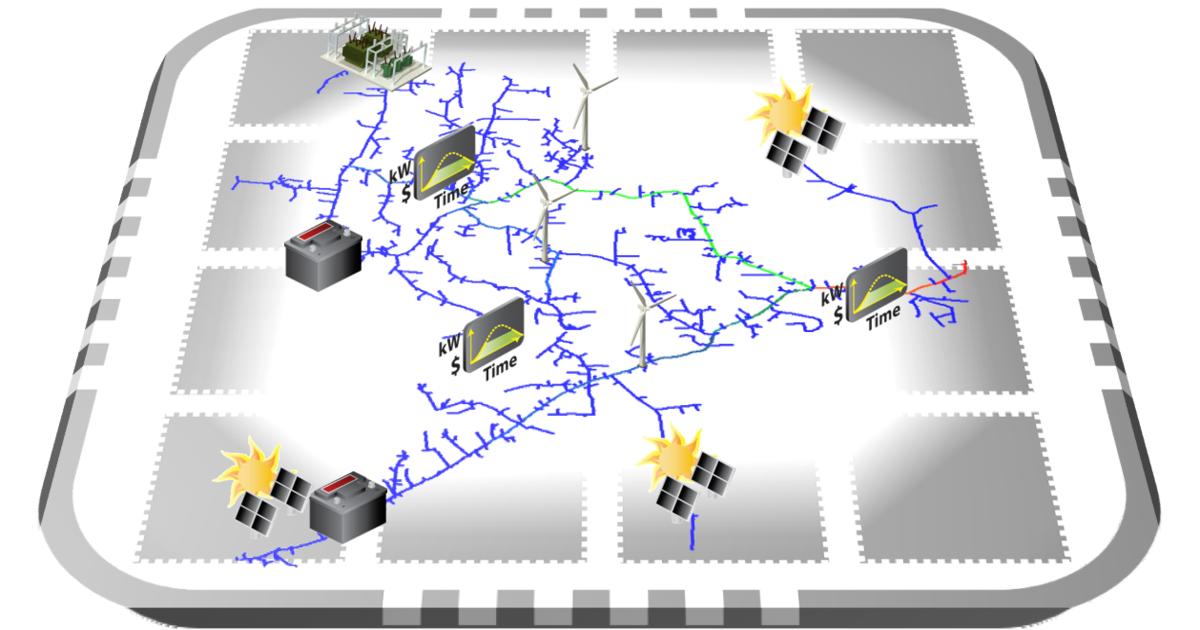Power System Modeling, Analysis and Simulation
A special issue of Energies (ISSN 1996-1073). This special issue belongs to the section "F1: Electrical Power System".
Deadline for manuscript submissions: closed (31 January 2022) | Viewed by 5353

Special Issue Editors
Interests: real-time processing; power quality; smart grid applications
Special Issue Information
Dear Colleagues,
Power system simulation tools and techniques are required in order to provide a framework for harmonizing technologies so that interconnected systems can be automated and simultaneously operated and visualized to obtain maximum benefits of the power system. These needs require analysis techniques and tools to consider the features of power systems that change with time when including new technologies for planning studies and power system analyses among other studies conducted in the power engineering business.
Modern analyses in the power systems domain have an iterative nature, looking for optimal solutions for a given problem. Some analyses combine alternative sets for relieving voltage and thermal violations within a planning horizon. Others combine methods and configurations to evaluate the power system’s sensitivity when exposed to different operational conditions. Multiple techniques exploit modern computing architectures for accelerating the simulation of large-scale power system models, taking the model into other domains such as real-time simulations, fast simulation with high resolution, electromechanical transients, optimal power flow, and multidimensional studies, among others.
This Special Issue is looking for novel methods in power system modeling and simulation applied to different applications within the power systems domain, including, but not limited to, planning, operation, real-time, fast simulation, co-simulation, and cloud and parallel computing.
Submit your paper and select the Journal “Energies” and the Special Issue “Power System Modeling, Analysis and Simulation” via: MDPI submission system. Please contact the special issue editor ([email protected]) for any queries. Our papers will be published on a rolling basis and we will be pleased to receive your submission once you have finished it.
Dr. Davis Montenegro
Dr. Gustavo Ramos
Guest Editors
Manuscript Submission Information
Manuscripts should be submitted online at www.mdpi.com by registering and logging in to this website. Once you are registered, click here to go to the submission form. Manuscripts can be submitted until the deadline. All submissions that pass pre-check are peer-reviewed. Accepted papers will be published continuously in the journal (as soon as accepted) and will be listed together on the special issue website. Research articles, review articles as well as short communications are invited. For planned papers, a title and short abstract (about 100 words) can be sent to the Editorial Office for announcement on this website.
Submitted manuscripts should not have been published previously, nor be under consideration for publication elsewhere (except conference proceedings papers). All manuscripts are thoroughly refereed through a single-blind peer-review process. A guide for authors and other relevant information for submission of manuscripts is available on the Instructions for Authors page. Energies is an international peer-reviewed open access semimonthly journal published by MDPI.
Please visit the Instructions for Authors page before submitting a manuscript. The Article Processing Charge (APC) for publication in this open access journal is 2600 CHF (Swiss Francs). Submitted papers should be well formatted and use good English. Authors may use MDPI's English editing service prior to publication or during author revisions.
Keywords
- power system analysis
- power system simulation
- parallel processing
- dynamics
- power system modeling
- real-time
- co-simulation
Benefits of Publishing in a Special Issue
- Ease of navigation: Grouping papers by topic helps scholars navigate broad scope journals more efficiently.
- Greater discoverability: Special Issues support the reach and impact of scientific research. Articles in Special Issues are more discoverable and cited more frequently.
- Expansion of research network: Special Issues facilitate connections among authors, fostering scientific collaborations.
- External promotion: Articles in Special Issues are often promoted through the journal's social media, increasing their visibility.
- e-Book format: Special Issues with more than 10 articles can be published as dedicated e-books, ensuring wide and rapid dissemination.
Further information on MDPI's Special Issue policies can be found here.






